
|   |

|   |
 e-mail: janakipatrik@gmail.com PRIDE August 2, 2024 The passage of time has allowed PRIDE to overcome prejudice. We now openly celebrate dancers whose lives were cut short during the 1980-1990 AIDS epidemic. And likewise we celebrate the "inclusion, diversity, equity and accessibility" for which so many have given their lives. This article is a tribute to their lives and their art; a memorial for their dancing and choreography, which could not reach full fruition; and a celebration of the promise found in more accepting attitudes and behavior, which are now being encouraged by corporate, government, social, legal and personal changes. WHY AM I WRITING THIS ARTICLE? I arrived in New York City in July 1971 and immediately enrolled in technique classes at the Merce Cunningham [1] Studio. Shortly after I enrolled in classes, the Studio held auditions for studio scholarships. I was awarded one of those coveted scholarships, and Merce continued my scholarship - without any yearly audition - until I left the Studio in 1978 to concentrate on Kathak. During that period I followed a regimen of two back-to-back Cunningham technique classes six days a week -- all taught by Merce himself and his company members. These technique classes, plus attending all performances by the Company when they were in New York City, and participating in choreography workshops, gave me the opportunity to observe the process through which pure technique is transformed into cutting-edge dance productions. It is that process -- and not the steps of Merce's technique -- which has fed my choreographic creativity. Without living this process, I could not have created the choreography which I have documented in this column - CHOREOGRAPHING BETWEEN TWO WORLDS. 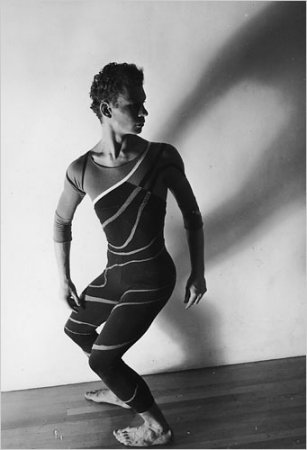 Merce Cunningham - Totem Ancestor (1942), Photo: Barbara Morgan 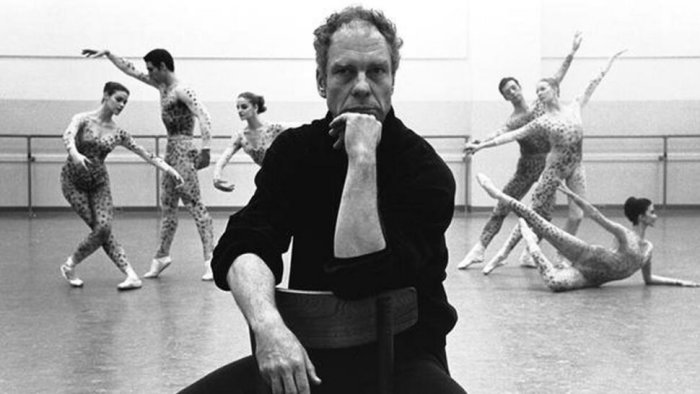 Merce rehearsing NYC Ballet in his production SUMMERSPACE (1966), Photo: Martha Swope 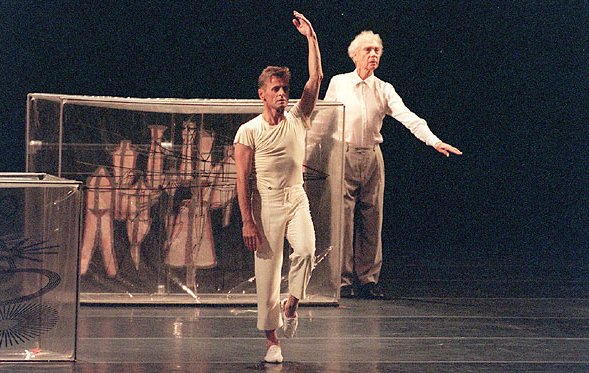 Cunningham-Occasion Piece (1999), celebrating his 80th birthday at Lincoln Centre with Mikhail Baryshnikov, Photo: Robert Whitman, courtesy Merce Cunningham Trust The Cunningham Studio was a hothouse of dance-making. It was also a place where some of the most beautiful dancers in the world were training and becoming the instruments of Merce's innovative choreography. And so I had the opportunity to become acquainted with Merce's dancers, a few of whom are included in this article on PRIDE. Pride in identity and in what is now being called "authenticity" are at the center of this article. I am celebrating dancers whom I knew - some of whom died during the American AIDS epidemic. In America's process of developing more accepting attitudes toward sexual and gender fluidity, many died. Partly as a result of their deaths, the current generation can now live more openly and authentically as their true selves. THE AIDS EPIDEMIC in New York City One of the epicenters of the AIDS epidemic in the United States in the 1980's and 1990's was New York City. The "West Village" was one of the centers of the arts in New York City and also of "Gay" life, and that population was hard hit during the AIDS epidemic. I always felt that it was particularly cruel that the privacy of a population already stigmatized, was "outed", because AIDS made the details of their intimate lives so visible. It was as if a spotlight was focused on their private lives, rather than on their dancing. And many who were already prejudiced against alternative life-styles callously took the opportunity to pontificate, preaching that AIDS was god's punishment for Gay people's sins. It certainly was not. It was a virus, not a form of punishment for a targeted group of people. 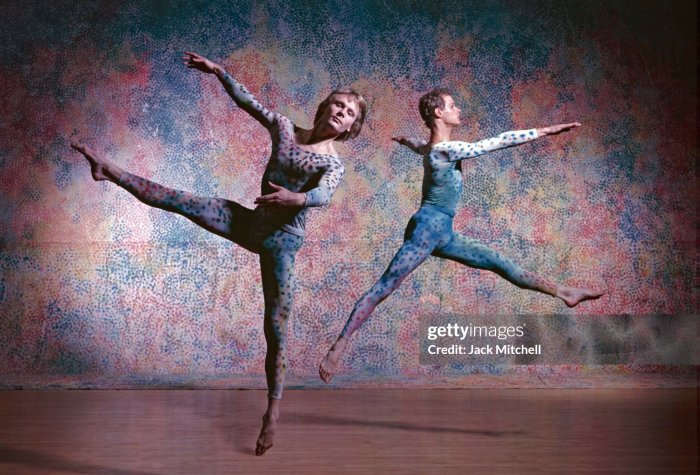 Chris Komar & Robert Kovich performing Merce Cunningham's SUMMERSPACE (1975) 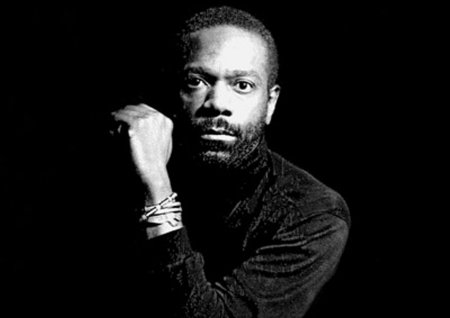 Ulysses Dove AIDS was a "ghost killer". Some of our friends - great dancers like Chris Komar (1946-1996).and Robert Kovich (1950-1991), and the innovative dancer-choreographer Ulysses Dove (1947-1996), died at the height of their careers. They would be dancing and choreographing "full out", and then, without noticeable cause, they would appear a bit sick and visibly weak. Next they would disappear, and we would learn that they were in the hospital. Dying -- dead. There was a stigma and a dangerous secrecy, which allowed the epidemic to spread. During this period it felt as if we were living in a war zone. So many great artists died. The big difference was that AIDS victims were not being cared for like war heroes. AIDS victims were stigmitized, and their sickness was labeled by some as the "disease of sinners". Most eggregious was the fact, that efforts to find the cause and cure of AIDS were not given priority by the government and the medical community. Eventually, the Gay community, their friends, people of conscience and members of the medical community joined together, concentrating attention on the AIDS epidemic. Beginning in 1986 the AIDS Walk in NYC was one of many events which raised money for medical research and raised awareness of the AIDS crisis. A popular Broadway play, "Angels in America" dramatized the personal and social extent of the crisis. In addition, since AIDS was indescriminate in its victims, many people who had been the loudest critics of alternate life styles, discovered that they had a family member or close friend who was sick or dying or dead from the effects of AIDS. People were confronted with the choice - do you hate or love? Do you let people live their private lives, or do you insert yourself where you do not belong? Beginning in the early 1980s, under the leadership of the Sisters of Charity, an organization within the Catholic Church, St. Vincent's Hospital in NYC became a major facility for the treatment of AIDS. It housed the first and largest AIDS ward on the East Coast. Located at Seventh Avenue and 8th Street, St. Vincent's Hospital was also the site of numerous LGBT actions against discrimination and violence toward the LGBT community. The extent of the impact of AIDS on the dance community is illustrated by the life of Ulysses Dove. Ulysses was an artist whose greatness was already fully manifest at his death in 1996 at age 49. Had he lived his full life expectancy, I am convinced that he would have been recognized as one of the greatest and most prolific 21st century choreographers. He had performed in the companies of modern dance greats Mary Anthony, Pearl Lang, Anna Sokolow and Merce Cunningham before ecoming a pricipal dancer and choreogrpher with Alvin Ailey's American Dance Theater. He then moved on to become a free-lance choreographer. 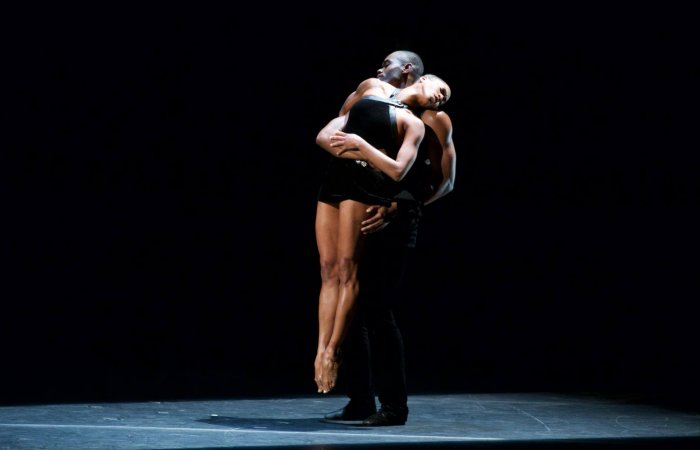 Alvin Ailey Co - Akua Noni Parker and Jamar Robertson, Photo: Earl Gibson 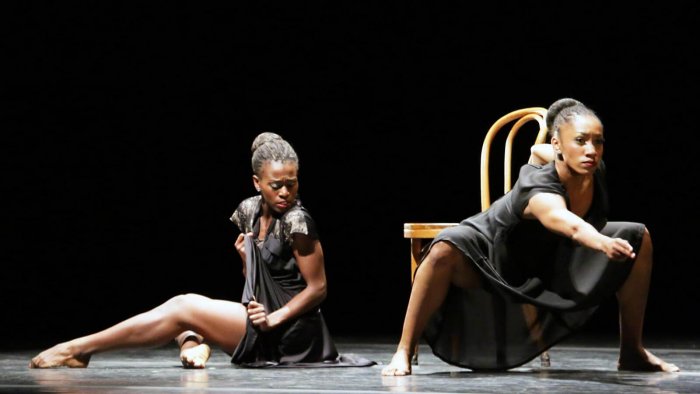 Vespers - Rachel McLaren & Demetia Hopkins-Greene, Photo: Francette Levieux, Alvin Ailey Co 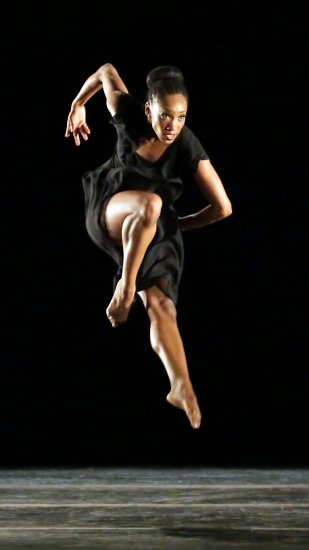 Demetia Hopkins-Greene, Photo: Francette Levieux, Alvin Ailey Co 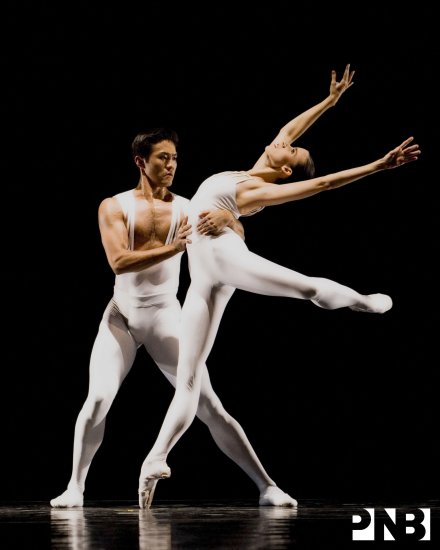 Dancing on the Front Porch of Heaven - Odes to Love & Loss - Lesley Rausch and Dylan Wald, Pacific Northwest Ballet, Photo: Angela Stirling 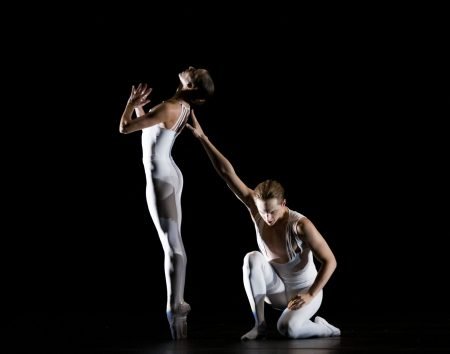 Dancing on the Front Porch of Heaven - Lesley Rausch and Dylan Wald in Ulysses Dove, Pacific Northwest Ballet, Photo: Angela Stirling Ulysses Dove's choreographic output was prodigious. Commissioned by international modern and ballet dance companies, Ulysses' works were premiered by the Royal Swedish Ballet, the Dutch National Ballet, American Ballet Theatre, New York City Ballet, the London Festival Ballet, the Alvin Ailey American Dance Theater and Pacific Northwest Ballet among others. Through movement Ulysses articulated passionate emotions and central dilemmas of our times. His choreographic voice would have been a force for continued cutting-edge, innovative choreography and nuanced social commentary.
PRIDE in 2024 The current PRIDE movement was born from the tragic events of the AIDS epidemic. The Gay community, whose members had traditionally hidden a central part of their identities, could no longer hide behind the silence, which had protected them from the adverse effects of prejudice. The number of victims of the epidemic was so large and spread so broadly throughout the population, that society had to confront the prejudice which was based on sexual identities and practices. Healthcare, job and housing access - and many other vital aspects of life - had been denied to men and women on the basis of their sexual identities. Organizing and demanding health care - activities initiated during the AIDS crisis -- led to organizing for equality in many other aspects of life. The Gay community began to feel pride rather than shame in its identity. Bill Clinton had officially declared June as "Gay and Lesbian Pride Month" in a presidential proclamation in 1999. President Barack Obama expanded the official Pride Month recognition in 2011, including the whole of the LGBT community. Because this is primarily an article about dancers and choreography, Iíll leave others to expand on what the Gay Pride movement has achieved in the United States. Suffice it to say that I was inspired to write this article at this specific time, because I attended a performance by American Ballet Theatre on its fourth annual PRIDE NIGHT - this year on 26 June 2024. Presented as part of their Summer 2024 season in the Metropolitan Opera house, Lincoln Center, New York City, PRIDE NIGHT loudly proclaimed ABT's commitment to the principals of community, equality, diversity and inclusivity. 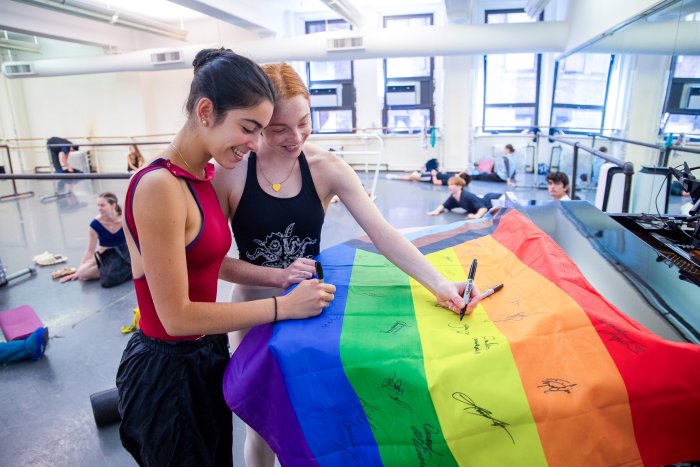 Signing the Pride Flag, Photo: Bethany Beacham On the night I attended the ABT performance of WOOLF WORKS, the "Pride Flag" signed by ABT dancers, was brought on stage and held aloft by two ABT dancers, Devon Teuscher and James Whiteside, who were surrounded by the entire cast of Wayne McGregor's WOOLF WORKS after its PRIDE NIGHT evening length performance. 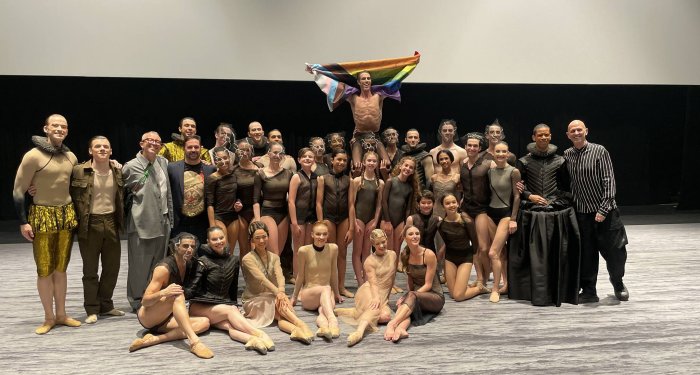 26 June 2024, photo labelled PEACE, LOVE & PRIDE This avant-garde production depicts the life and work of queer literary icon Virginia Woolf. Below is a high-resolution scan of page one of American Ballet Theatre's program insert. Enlarging the scan provides a large, readable copy of ABT's statement of commitment to the principals of PRIDE. 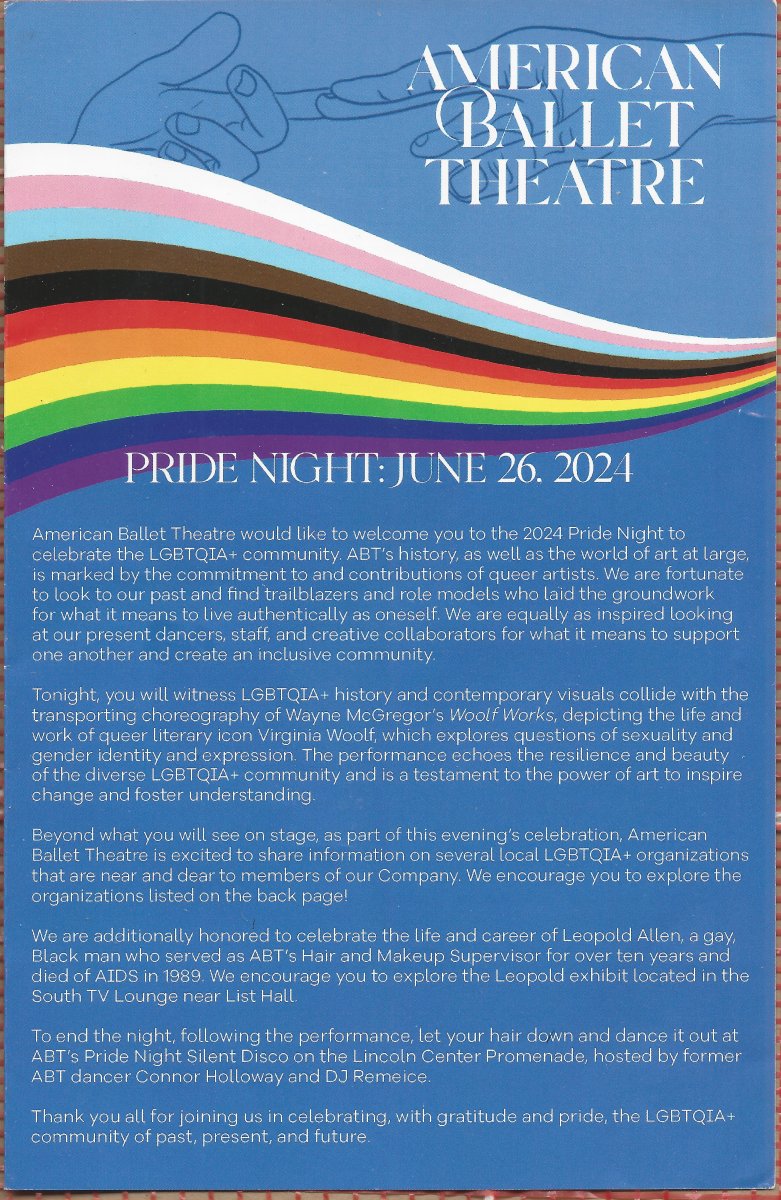 ABT Pride Night, 26 June 2024, program insert, statement about ABT and PRIDE Silence allows hatred and prejudice to fester and triumph. ABT's post of its photos of PRIDE NIGHT proclaimed, "Peace, Love, and PRIDE " Though prejudice and hatred cannot be eradicated by proclamations and dance productions, the dance community's clear statement of support for those who manifest its art, no matter what the details of their private lives, has been a powerful force for inclusion, diversity, equity and accessibility. FOOTNOTES 1. Merce Cunningham (1919-2009) was a major creative force in modern dance in the 2nd half of the 20th century and the first decade of the 21st century. He created a distinct movement vocabulary and choreographed 190 repertory dances and more than 700 "Events". I quote from the Cunningham Trust's website, "[Merce's] seven-decade career was distinguished by constant innovation in which he expanded the frontiers of contemporary art, visual arts, performing arts and music." 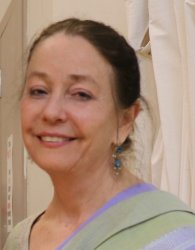 Trained in both classical Kathak dance (Pt. Birju Maharaj, beginning 1967) and Merce Cunningham modern dance technique (1971 to 1978), Janaki Patrik has choreographed thirty full-evening productions and numerous shorter works exploring an eclectic range of poetry, mythic storytelling and music. She is the Artistic Director and Founder (1978) of The Kathak Ensemble & Friends/CARAVAN, NYC. A dedicated teacher, Janaki has trained dancers to perform an extensive repertoire of classical Kathak, as well as her new choreography. Teaching and performing in inner-city schools through Urban Gateways / Chicago and Young Audiences / New York for forty years, Janaki has embodied the power of dance and music to communicate the interconnections of all cultures. Post your comments Please provide your name along with your comment. All appropriate comments posted with name & email id in the blog will also be featured in the site. |